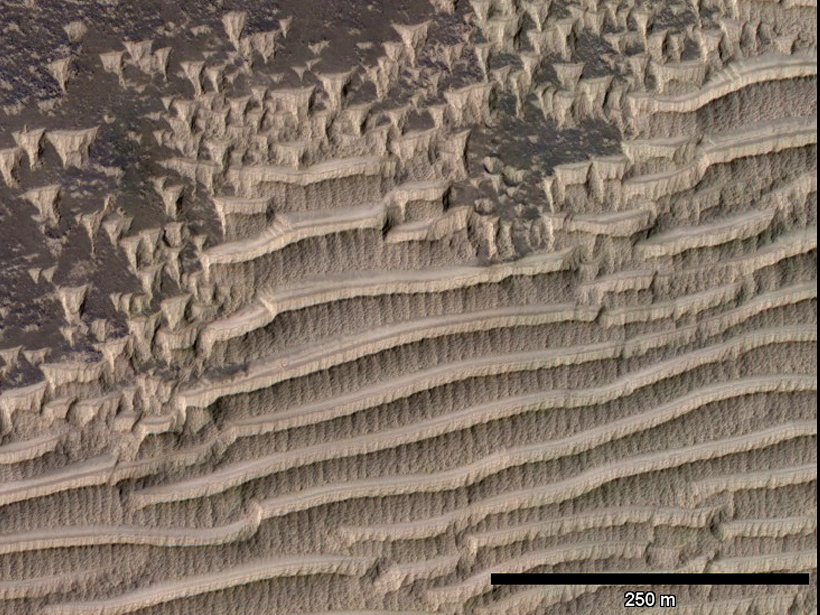Source: Journal of Geophysical Research: Planets
Transverse aeolian ridges (TARs) were discovered on Mars more than 20 years ago, but their origins still remain a mystery. The popular hypothesis is that TARs are ripples that resist erosion because of an outer layer of coarse particles. Geissler proposes an alternate hypothesis, that TARs are hardened dust deposits formed millions of years ago that were sandblasted to their current states.
TARs show up on satellite images as bright crescent-shaped ridges. These bright ridges stand out from the large dark sand dunes commonly found on Mars. Surveys show that TARs are concentrated in the Martian tropics and are found at all elevations.
TARs occur in simple and complex forms. Simple TARs are parallel ridges that taper at the ends. They occur in flat areas and channels. Complex TARs form networks of smaller ridges perpendicular to the main ridges. These occur in crater interiors.
The author shows that the hardened dust deposit hypothesis is supported by the characteristics of TARs. TARs are brighter than sand dunes, despite having a similar composition, because the basaltic dust that TARs are composed of reflects more light than the larger sand-sized basalt particles of the dunes. The infrared brightness of TARs changes with temperature more rapidly than that of the sand dunes. The smaller the particle size is, the faster it equilibrates to temperature changes. When the temperature drops during the Martian night, the TARs cool down and stay colder than the sand dunes. Also, TARs are found far from sediment sources. Because of this lack of sediment sources and their uniform composition, TARs are hypothesized to be created from airborne dust. Scientists have dated TARs as younger when they are located close to dunes and much older when they are far from dunes. In the new model, sand blowing off the dunes erodes the surface of TARs, making the TARs close to dunes appear younger than the TARs far from dunes.
Wind speeds of 40 meters per second and a steady supply of suspended dust are required for TAR formation in this hypothesis. Because TARs are distributed globally, the conditions when the TARs were formed 5 million years ago are thus inferred to have been different from those today. TARs are important because they may hold clues to what the weather was like 5 million years or so ago. (Journal of Geophysical Research: Planets, doi:10.1002/2014JE004633, 2014)
—Catherine Minnehan, Freelance Writer
Citation: Minnehan, C. (2015) What formed these curious ripples on Mars?, Eos, 96, doi:10.1029/2015EO035627. Published on 18 September 2015.
Text © 2015. The authors. CC BY-NC 3.0
Except where otherwise noted, images are subject to copyright. Any reuse without express permission from the copyright owner is prohibited.

